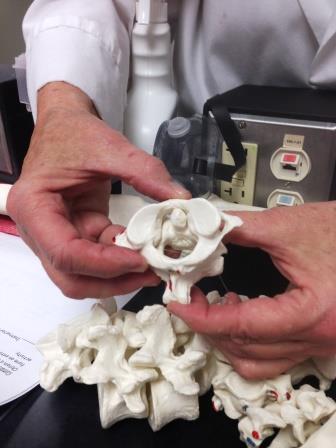
Home > Dispatches > Daily Dispatches 2016 >Daily Dispatch #63
March 5, 2016: New Neural Pathways Charter School
Today in internal martial arts class, Jay (instructor) made note of the fact that in class last Thursday, I was having a difficult time with one of the forms in a Chi Gong exercise. I just could not figure out how to move my hands and fingers in unison. I remarked today that this could have something to do with my lack of depth perception. Jay (who seems to be irritated with me about this) first said that he did go over this in a previous class, then added that this would come easier after I created some new neural pathways. I thought – huh – I now know all about neural pathways. Last semester I learned about them while studying the chapter on the brain in Anatomy and Physiology I. For example, there are multi-polar, bi-polar, and uni-polar neuros. I also learned some about the structure of neurons and how impulses are transmitted. So yeah, I get it. That is, I get how pathways are formed, and by what. However, I’m now thinking that there is also a mental aspect to this. Of course the physical has an effect on the mental – if one is in balance and in alignment the mental, decision-making related formation of new pathways comes easier. |
|
|
This is an area of study that merits further exploration. Problem is, it is hard to monitor what the neurons are doing when one is making a decision about, say, making a change in plans. The best any of us non-scientists can do, knowing that decision making in relation to neural pathway formation can’t be studied – is to keep doing things in an aware, but spontaneous fashion. This means, once you get something down, vary it. A good example – yesterday, when out on the trail, I took a short jaunt up a differing trail, knowing that it dead ended – just to keep things interesting for me and for the horse. Another example – in class today we did hip circles, beginning as we usually do and moving our hips in a circle with our feet slightly apart. Then Jay had us do these circles with our legs further apart. He made the decision to have us do this exercise differently. Then he had us do hip circles with our feet wide apart, while doing figure eights. If he came up with these variations on his own, he was forging new neural pathways. If he learned these variations from someone else, they were forging new neural pathways. Point to be made here – someone, somewhere, was forging new pathways in doing something differently. I didn’t forge new pathways in following suit. Rather, I forged them in doing the physical movements differently than previously. And in the process, my awareness shifted to differing body parts because I was doing something differently. What I’m saying in the above paragraphs could have implications for teachers and students. Maybe I could start a charter school, call it New Neural Pathways – students could have classes in the arts and sciences in which the focus is on neuroscience – and they might approach this area of endeavor by being encouraged to do things differently – perhaps deviate from deductive and inductive thinking. This would make all involved more flexible, both mentally and physically. |
|
